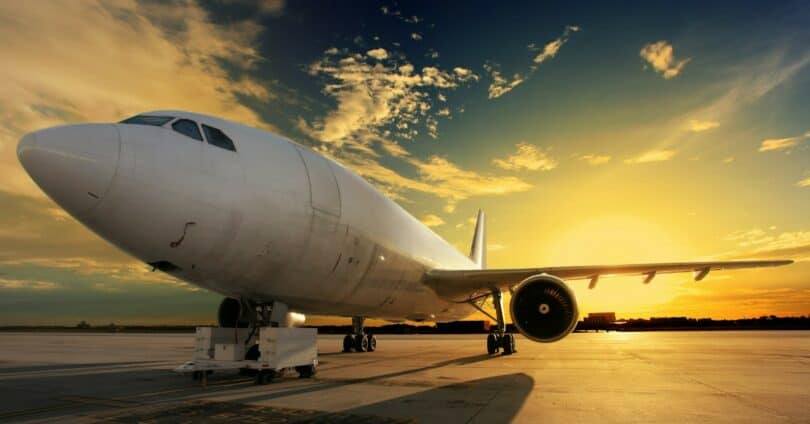Have you ever gazed up at the sky, marveling at a plane as it soars through the clouds, and wondered what makes it tick? Aircraft are marvels of modern engineering, complex machines that manage to make the act of flying seem almost effortless, and thanks to companies like Pilot John International we have all of the parts needed to fly from A to B. But what exactly goes into the anatomy of an aircraft?
Understanding the Basics: The Main Components
Before we delve deeper, it’s essential to grasp the basic structure of an aircraft. At its core, an aircraft is composed of the fuselage, wings, empennage, powerplant, and landing gear.
- Fuselage: This is the main body of the aircraft, holding passengers, cargo, and essential flight equipment.
- Wings: These are crucial for lift, enabling the aircraft to soar through the skies.
- Empennage: Also known as the tail section, it provides stability and control.
- Powerplant: This encompasses the engines that generate thrust.
- Landing Gear: Essential for takeoff and landing, this includes the wheels and related systems.
Diving Deeper: The Intricate Systems
Aircraft are more than just their physical structure; they consist of intricate systems that ensure safety, efficiency, and comfort during flight. Let’s explore some key systems:
1. The Propulsion System
This system is all about power! It includes the engines, which can be jet, piston, turbine, or even electric. The engines’ primary role is to produce thrust, propelling the aircraft forward and enabling it to climb or descend.
2. The Avionics System
Think of avionics as the brain of the aircraft. This system includes navigation, communication, and weather radar, ensuring the aircraft stays on course and maintains communication with ground control.
3. The Hydraulic System
Hydraulics in aircraft are akin to the muscles in our body. This system powers various components like flaps, landing gear, and brakes, using pressurized fluid for movement and control.
4. The Electrical System
From lighting to onboard electronics, the electrical system powers it all. It’s a complex network that includes generators, batteries, and distribution panels, ensuring that all electrical components function seamlessly.
5. The Fuel System
No aircraft can fly without fuel! The fuel system manages the storage and distribution of fuel to the engines, playing a critical role in the aircraft’s range and efficiency.
The Magic of Flight: Understanding Aerodynamics and Control
Have you ever wondered what keeps an aircraft stable in the air, allowing it to ascend, descend, and maneuver with precision? The answer lies in the fascinating world of aerodynamics and the aircraft’s control systems. Let’s unravel this magic and understand how pilots interact with these systems to guide these majestic machines through the skies.
The Essence of Aerodynamics
Here’s a breakdown of the key aerodynamic forces at play:
- Lift: Generated by the wings, lift counteracts gravity and is created by the difference in air pressure above and below the wing.
- Thrust: Produced by the engines, thrust propels the aircraft forward, overcoming air resistance or drag.
- Drag: This is the resistance an aircraft faces as it moves through the air. Minimizing drag is crucial for efficient flight.
- Weight: The force of gravity pulls the aircraft downward, which is balanced by lift to maintain flight.
Mastering Control: How Pilots Steer Aircraft
Pilots use a set of controls to manage the aircraft’s direction and attitude in the air. These controls are interconnected with the aircraft’s control surfaces:
- Ailerons: Located on the wings, ailerons control roll, allowing the aircraft to tilt left or right.
- Elevator: Found on the tail, the elevator controls pitch, enabling the aircraft to climb or descend.
- Rudder: This control surface on the vertical tail fin manages yaw, helping the aircraft turn left or right.
These control surfaces work in harmony, allowing pilots to execute precise maneuvers, from gentle turns to complex flight patterns. Pilots use a combination of the yoke or stick, rudder pedals, and other instruments to adjust these surfaces as needed.
The Role of Flight Instruments
Flight instruments play a crucial role in helping pilots understand the aircraft’s orientation, altitude, speed, and other critical parameters. Some key instruments include:
- Altimeter: Measures the aircraft’s altitude above sea level.
- Attitude Indicator: Shows the aircraft’s orientation relative to the horizon.
- Speed Indicator: Displays the aircraft’s speed, crucial for safe and efficient operation.
Interactive FAQ: Your Questions Answered
Q: How do pilots control the aircraft? A: Pilots use a combination of controls like the yoke, rudder pedals, and throttles, along with various switches and dials, to maneuver the aircraft. It’s a skillful dance of inputs that guides the plane through the skies.
Q: Can an aircraft fly without electricity? A: While electricity is crucial for many systems, aircraft can glide for a while without power, thanks to their aerodynamic design. However, for safety and operational reasons, it’s vital to restore power quickly.
Q: What happens if an engine fails? A: Aircraft are designed with redundancy in mind. In the event of an engine failure, pilots can often continue flying with the remaining engines and land safely, thanks to rigorous training and emergency procedures.
In Conclusion
From the roaring engines to the silent but crucial hydraulic lines, every part of an aircraft has a story to tell, a function to perform. So, the next time you’re gazing at a plane, remember that it’s not just a machine but a symphony of engineering, technology, and human ingenuity.









